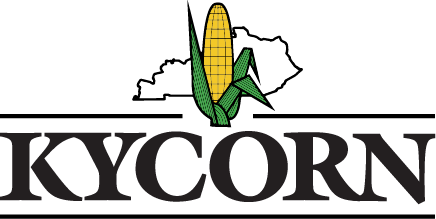What are they, and why are they important to corn farmers?
Many farmers, when reading ag media over the past couple of weeks, have gotten acronym overload over a complicated but integral part of the Renewable Fuels Standard.
The topic has been discussed on numerous occasions in the White House throughout the past few weeks, and it largely dominated the scene at Commodity Classic in Anaheim, CA, when farmers would have expected the spotlight to be on another set of acronyms: NAFTA, WOTUS, ARC and PLC.
But the spotlight turned to RFS, RINs and RVP very quickly when, on the other side of the continent, President Trump hosted a series of meetings between a group of Republican Senators, half of which are strongly supportive of the Renewable Fuels Standard, the other half, not so much. The discussion was about RINs, particularly if their trading price has anything to do with farm income.
RINs are a feature of the RFS; in simplest terms, they are the market-oriented compliance mechanism of the RFS. RINs enter the marketplace as a credit, generated by the production of a gallon of ethanol that follows that gallon through the first portions of the supply chain. Their purpose is to establish a price for non-compliance for “Obligated Parties” (who, typically, are refiners and blenders) to choose if they want to ignore the RFS law (or in other words, blend ethanol at levels below their obligation as established by the “RVO.”) If Obligated Parties exceed their blending obligation, they retain a credit in the form of a RIN. On the flip side, if they do not meet their obligation, they have to purchase a RIN to offset their non-compliance.
The conventional renewable fuel RIN, the RIN derived from production of corn-based ethanol, is characterized as D6. There is a RIN category for each type of Renewable Fuel that is referenced in the RFS; and the category for each RIN has its own price. Any manipulation in pricing (in either direction) would disrupt the incentive to blend biofuels. An artificially lower price (such as a price cap) would reduce the cost of non-compliance and influence Obligated Parties to blend less renewable fuels. Inversely, an artificially higher price would drive the Obligated Parties to blend higher amounts of ethanol, because the cost of RFS non-compliance increases.
According to RINs’ market mechanism, if every Obligated Party fully blended renewable fuels based on their own RVO, there would be no need for RINs and their price would be zero. So, it’s clear that the best solution for high-priced RINs is to blend more ethanol.
So, as mentioned earlier, the crux of the discussion was about whether this affects farmers. Shortly after the White House discussions hit the mainstream, many academic economic think tanks weighed in.
University of Illinois, was the first analysis to be published in their February 28 edition of Farm Doc Daily. The title of the article is The Grand Bargain? Trading an E15 Waiver for RINs Price Cap.
“The picture that emerges from this analysis of a “grand bargain” over the RFS is one where the impact of an RVP waiver for E15 would be vastly smaller than the impact of a 10-cent per gallon RINs price cap. Whether this is a positive trade off obviously depends on the interests at stake. Agricultural and biofuels interests will find this trade off distinctly unappealing, while refining interests will tend to have just the opposite reaction.”
Purdue University said, “Any of the options employing a RINs price cap would prevent achieving the objectives of the RFS.” Their report is titled Impacts of Options for Modifying the Renewable Fuels Standard.
Iowa State’s Center for Agriculture and Rural Development’s analysis is entitled E15 and E85 Demand Under RIN Price Caps and an RVP Waiver. That analysis projected “Corn prices under this scenario would drop, in the short-run, by around 25 cents per bushel.”
Despite all of the acronyms and facts and figures swimming around, farmers should just keep three things for certain: 1) Ethanol constitutes 30 percent of the US corn crop. 2) If you mess with the RFS, corn prices will fall. 3) With farm income at a 12-year low, that can’t happen.

